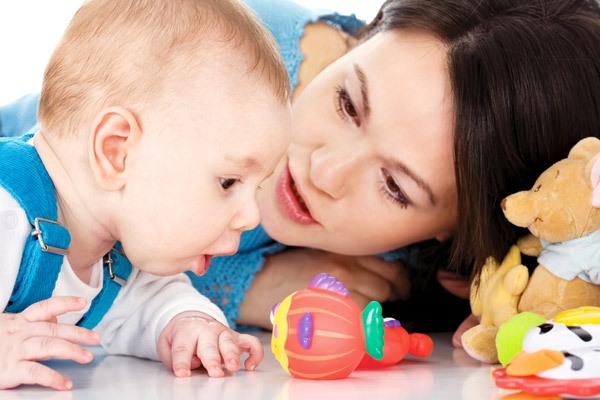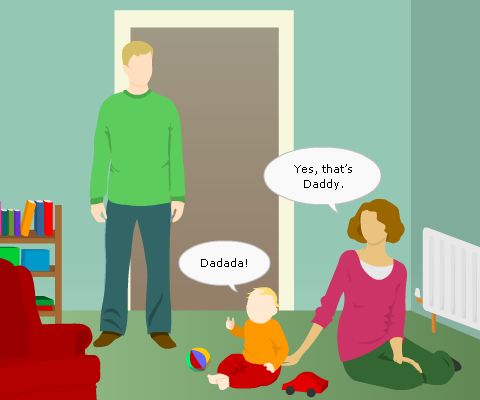Typical Development Part 2: First Words and Early Sentences course


This session gives an overview of the main aspects of how language typically develops in children. It covers the growth of their vocabulary and their developing understanding and use of grammar.
Learning objectives
By the end of this session you will be able to:
- Describe the typical sequence of language development in pre-school children from first words to complex sentences
- Recognise the range of variation in the ages at which milestones are achieved by typically-developing children
This session is about the course of typical language development from the point at which a child first uses a meaningful word (usually 10-14 months) through to fluent speech (usually by 60 months).
Before commencing this session you should (complete):
- 07_03 Typical Development Part 1: From Birth to Babble (402-0035)
- 07_02 Child as Listener and Speaker Part 2: Verbal Aspects of Communication (402-0010)
Sally is a Senior Lecturer in clinical linguistics and phonetics on the BSc (Hons) programme in Speech and Language Therapy at the University of St Mark and St John.
She is a dual-trained phonetician and speech and language therapist (SLT). Sally’s PhD was in acoustic phonetics and she has subsequently developed a web-based self-study resource in phonetic transcription and co-authored two clinical assessments for disordered speech production.
Sally has practised as a paediatric community clinician and a specialist SLT in a language unit for children with developmental language disorder. She also worked for the North Prospect Sure Start Lark Project developing resources to promote good parent-child interaction and early language skills and as a freelance assessor on the Children’s Workforce Development Council award of Early Years Professional Status. Her research interests include speech sound disorder and the relationship between speech perception, phonological awareness and early literacy development.


John Oates FAcSS FRSA HonFBPsS is Professor of Developmental Psychology at The Open University. John’s primary research focus is on social development in early childhood. He led an ESRC-funded longitudinal study of infants with Down syndrome and a Department of Health funded service evaluation of a Family Nurse Partnership pilot programme.
He has also been involved in an NHS trial and implementation of a care pathway scheme for mothers with young babies in a primary care trust, and the adoption of a screening tool he developed in the field of perinatal mental health; a study of health visitor assessments of mother-infant relations funded by the Burdett Nursing Trust; and longitudinal cohort studies of children in Budapest.
He was member of the programme team for Early Support with particular responsibility for developmental journals, and partner in the development of Biztos Kezdet, an EU-funded national programme in Hungary based on Sure Start, for disadvantaged children and families.
With Professor Martin Woodhead, he was director of Early Childhood in Focus, a project funded by the Bernard van Leer Foundation in the Netherlands, producing policy guidance based on early childhood research. He was an academic consultant to the OU/BBC Child of Our Time series 2001-2011, and consultant author for Development Matters in the English Early Years Foundation Stage.
- Acquired Brain Injury course
- Posted By eIntegrity Healthcare e-Learning
- Posted Date: 2025-03-13
- Location:Online
- This session will outline the causes and effects of acquired brain injury (ABI) in childhood. It wil...
- Common or Serious Problems That are Easily Missed ...
- Posted By eIntegrity Healthcare e-Learning
- Posted Date: 2025-03-13
- Location:Online
- This session looks at easily missed medical and mental health problems in children and young people....
- The Child Not At School course
- Posted By eIntegrity Healthcare e-Learning
- Posted Date: 2025-03-13
- Location:Online
- An overview of common reasons why children may not be attending school and the role of the health pr...
- Sleep Difficulties course
- Posted By eIntegrity Healthcare e-Learning
- Posted Date: 2025-03-13
- Location:Online
- This session describes sleep in young people; what normal sleep is and what common sleep difficultie...
- Headaches course
- Posted By eIntegrity Healthcare e-Learning
- Posted Date: 2025-03-13
- Location:Online
- Headache is an important and common health problem for children that may lead to school absence and ...








